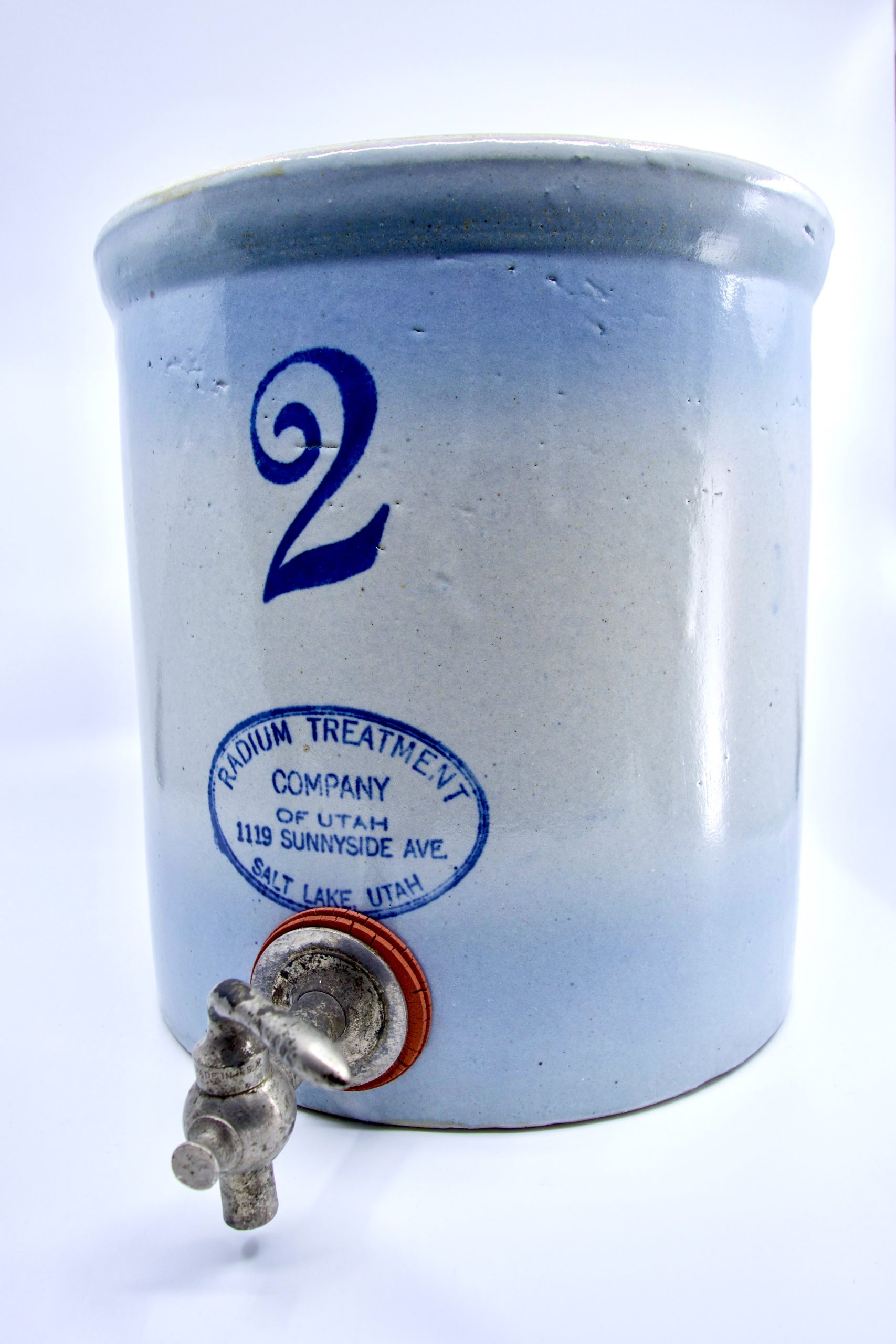Some information may be outdated.
This article is part of a series exploring items in the Moab Museum’s Collection.
From geiger counters to uranium miner and prospector Charlie Steen’s bronze-coated boots, the Moab Museum is featuring objects from our diverse collection, and our highlight this week is an object from the fluorescent side of Moab’s deep history.
Infused with uranium ore from Moab’s backyard, the Revigator was a radium-steeping water crock made throughout the early to mid-1900s. These ceramic water crocks were lined with the radioactive ore mined in the Moab area and manufactured for consumer drinking water.
Manufacturers sold the crocks claiming to cure “everything from arthritis to flatulence to senility.” Unfortunately for the uranium water business, the Food and Drug Administration cited severe health concerns and cracked down on what was thought to be a “magical elixir.” If radon toxicity wasn’t concern enough, arsenic and lead poisoning were also of deep concern.
This crock style displayed at the Moab Museum was known as “The Revigator.” Water in the crock absorbed radium released via the decay of the uranium ore ranging from a few hundred to a few hundred thousand picocuries per liter (a curie is the traditional unit of measure for radioactivity). Revigators were not just isolated to the uranium boom town of Moab. According to the National Institute of Standards and Technology (NIST), “The Radium Ore Revigator Company,” based out of San Francisco, California, “sold several hundred thousand of their glazed ceramic jugs” across the country.
The Moab Museum is dedicated to sharing stories of the natural and human history of the Moab area. To explore more of Moab’s stories and artifacts, find out about upcoming programs, and become a Member, visit www.moabmuseum.org.
Appreciate the coverage? Help keep local news alive.
Chip in to support the Moab Sun News.





